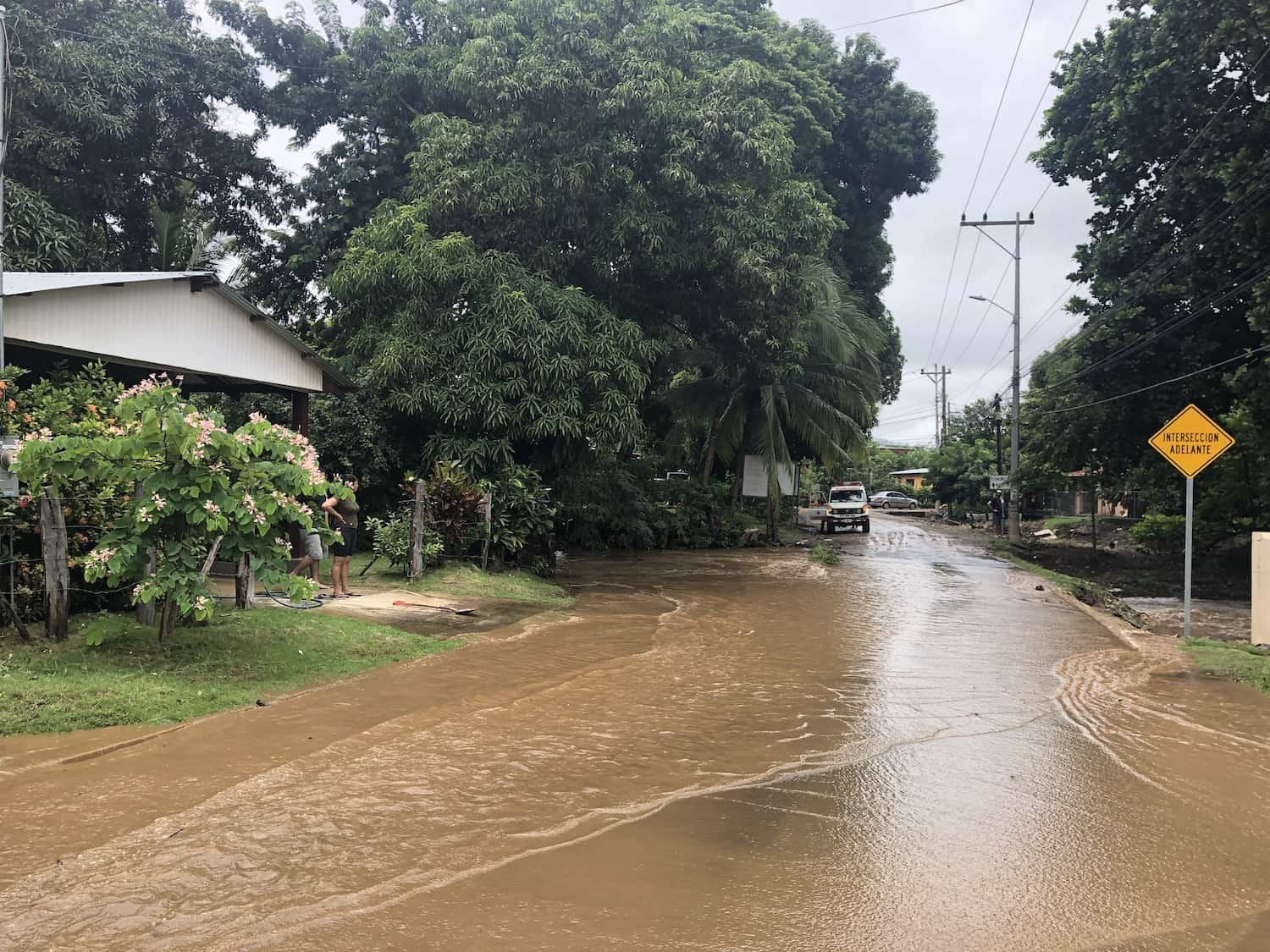Heavy rainfall coupled with high tides caused flooding in several parts of Costa Rica over the weekend, affecting at least 33 municipalities.
The most affected areas were Golfito, Esparza, Quepos, and Garabito. Rising rivers and the collapse of sewers led to the flooding of homes and businesses. Other impacts were due to the high tides, with reports coming from Puntarenas, Caldera, El Cocal in Quepos, and Pavones in Golfito.
Oceanographer Omar Lizano says that swells are coming from the South Pacific, resulting from the formation of high and low-pressure systems.
“This situation means we receive waves that break heavily on the beaches, with the highest expected between Saturday, Sunday, and Monday,” the expert explained.
“It’s essential to clarify that forecasts are usually generated in deep waters, but this swell that comes from afar has an estimated height. However, it can reach the shore with even greater height and force,” Lizano warned.
The CIMAR wave forecast is as follows:
- In the North Pacific, waves could reach heights of up to 1.7 meters offshore from Thursday, with a wave train arriving on Sunday with highs of 2.3 meters. They will decrease starting Tuesday.
- In the Central to South Pacific, waves could measure up to 1.6 meters offshore, with a wave train arriving between Sunday and Monday, reaching a maximum of 2.5 meters.
- Meanwhile, in the Caribbean, waves are forecasted to reach heights of 1.7 meters from Thursday, slightly increasing to 1.9 meters on Sunday and decreasing from Monday onwards.
On the other hand, the National Meteorological Institute (IMN) stated that the country is currently in the most intense phase of the rainy season.
According to the IMN, moderate to heavy rains are expected on Monday, accompanied by thunderstorms.
“In the afternoon, varying intensity rains are anticipated in the Central and South Pacific regions, with totals between 30-80 mm. In the Central Valley, Nicoya Peninsula, and the Northern Zone, intermittent rains are expected throughout the afternoon and night, ranging between 5-40 mm,” the meteorological institute detailed.
The primary cause is the Intertropical Convergence Zone, which is currently close to the country, causing morning rains in the Pacific. There’s also an influx of moisture from both maritime sectors.
In light of these conditions, authorities urge caution, especially for those living in areas prone to landslides and floods.
They recommend taking the following precautions:
- Stay informed of the latest weather forecasts and warnings.
- Avoid driving through flooded areas.
- If you must drive, use caution and be aware of the potential for flash flooding.
- Be prepared to evacuate if necessary.
- Have a plan in place for your family in case of a flood.
Authorities are also working to assess the damage caused by the flooding and to provide assistance to those affected.
The Costa Rican government has declared a state of emergency in the affected areas. This will allow the government to mobilize resources and personnel to help those affected.
The flooding is a reminder of the importance of being prepared for natural disasters. By taking the necessary precautions, you can help to protect yourself and your family.






